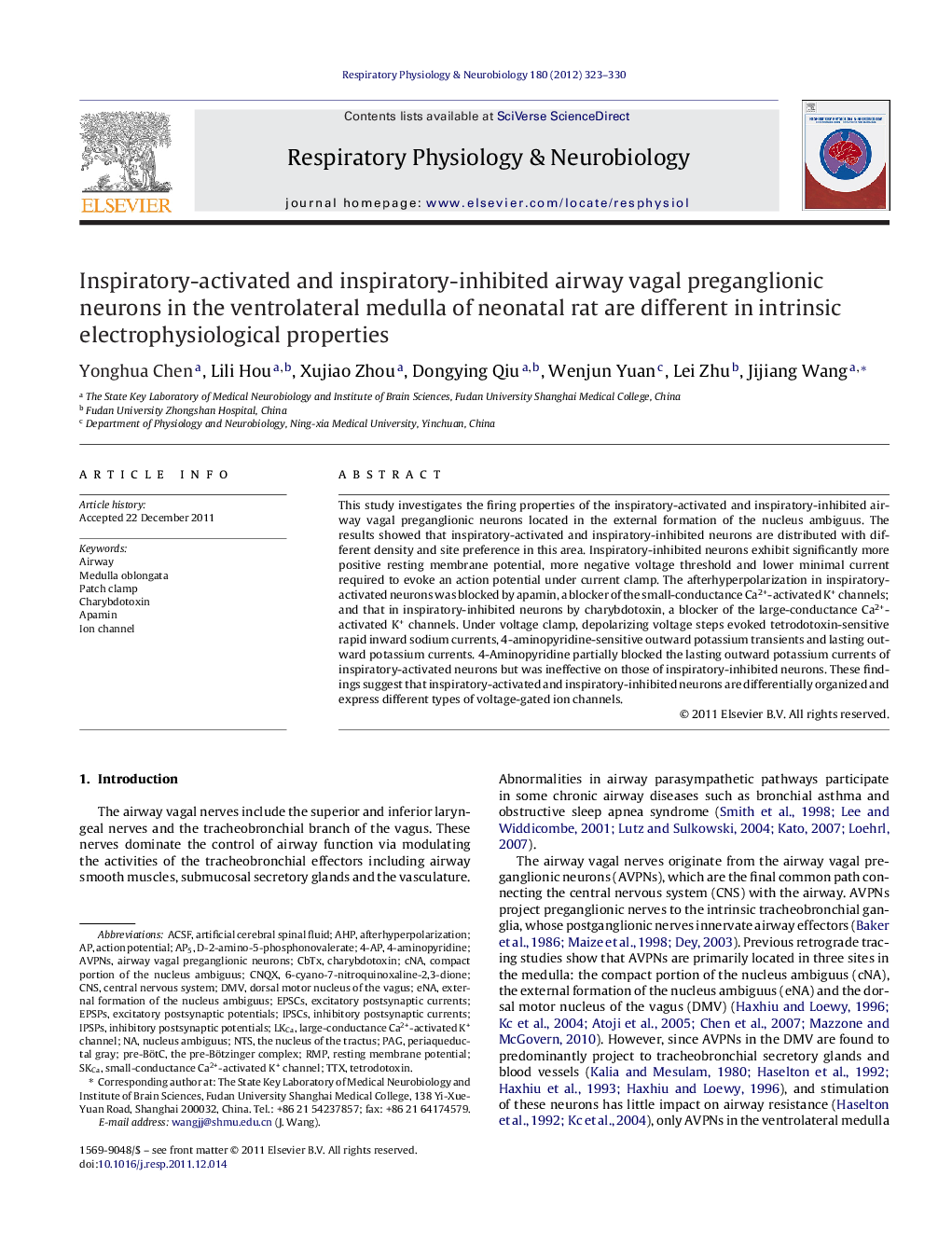| Article ID | Journal | Published Year | Pages | File Type |
|---|---|---|---|---|
| 5926364 | Respiratory Physiology & Neurobiology | 2012 | 8 Pages |
Abstract
⺠Inspiratory-activated and inspiratory-inhibited AVPNs differ in architecture. ⺠Inspiratory-inhibited AVPNs has higher excitability under current clamp. ⺠Different K+ channels mediate the afterhyperpolarization in AVPNs. ⺠Different K+ channels mediate the voltage-gated lasting K+ currents in AVPNs.
Keywords
EPSCsCbTxSKCalarge-conductance Ca2+-activated K+ channelEPSPsIPSPsDMVCNAAP5Medulla oblongataNTSRMPIPSCsENAPAGTTXaCSF4-AP4-aminopyridine6-Cyano-7-nitroquinoxaline-2,3-dioned-2-amino-5-phosphonovalerateApaminafterhyperpolarizationtetrodotoxinexcitatory postsynaptic currentsinhibitory postsynaptic currentsperiaqueductal grayCNSAirwayCNQXcentral nervous systemAHPartificial cerebral spinal fluidnucleus ambiguusdorsal motor nucleus of the vagusaction potentialresting membrane potentialexcitatory postsynaptic potentialsinhibitory postsynaptic potentialsPatch clampcharybdotoxinIon channel
Related Topics
Life Sciences
Biochemistry, Genetics and Molecular Biology
Physiology
Authors
Yonghua Chen, Lili Hou, Xujiao Zhou, Dongying Qiu, Wenjun Yuan, Lei Zhu, Jijiang Wang,
